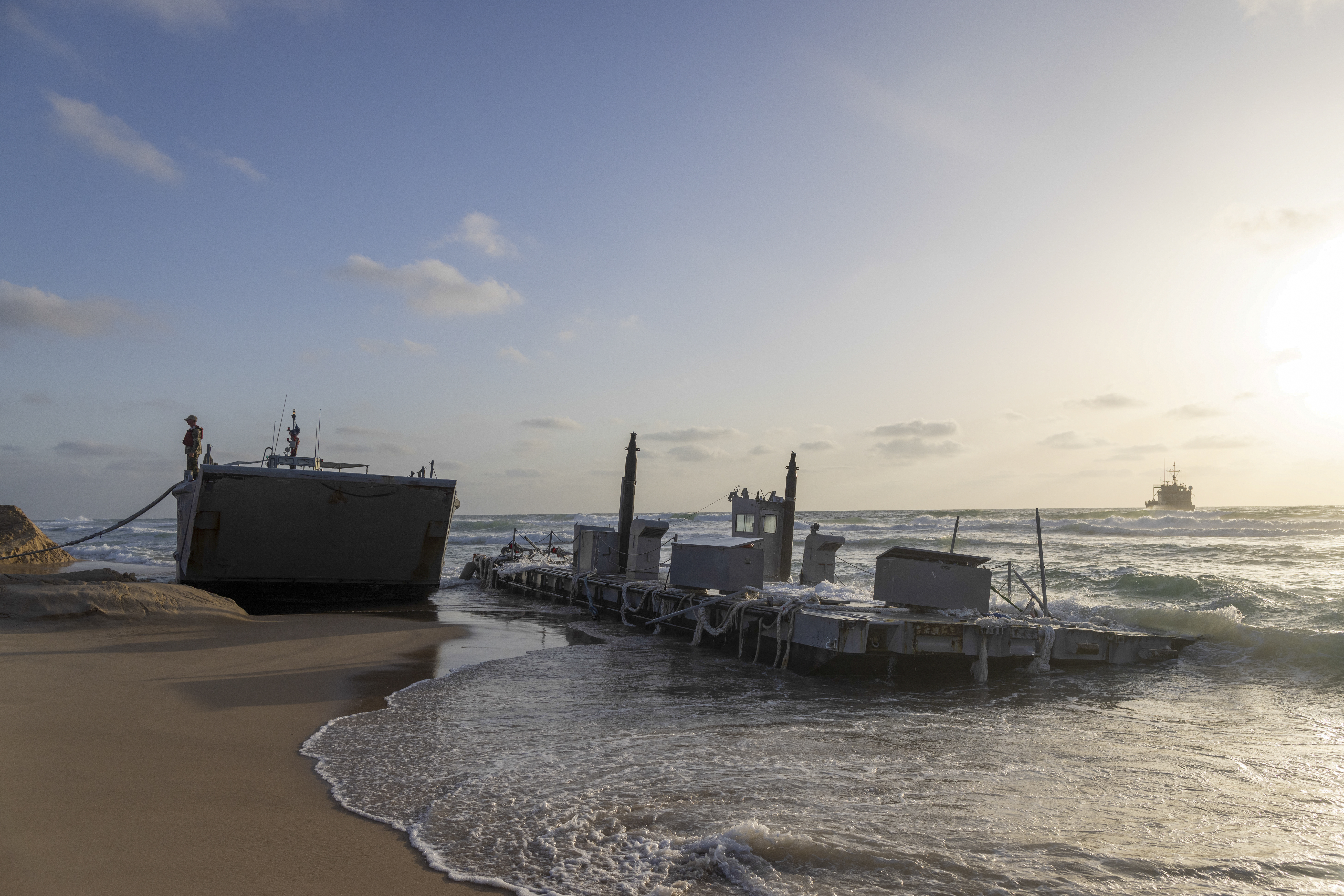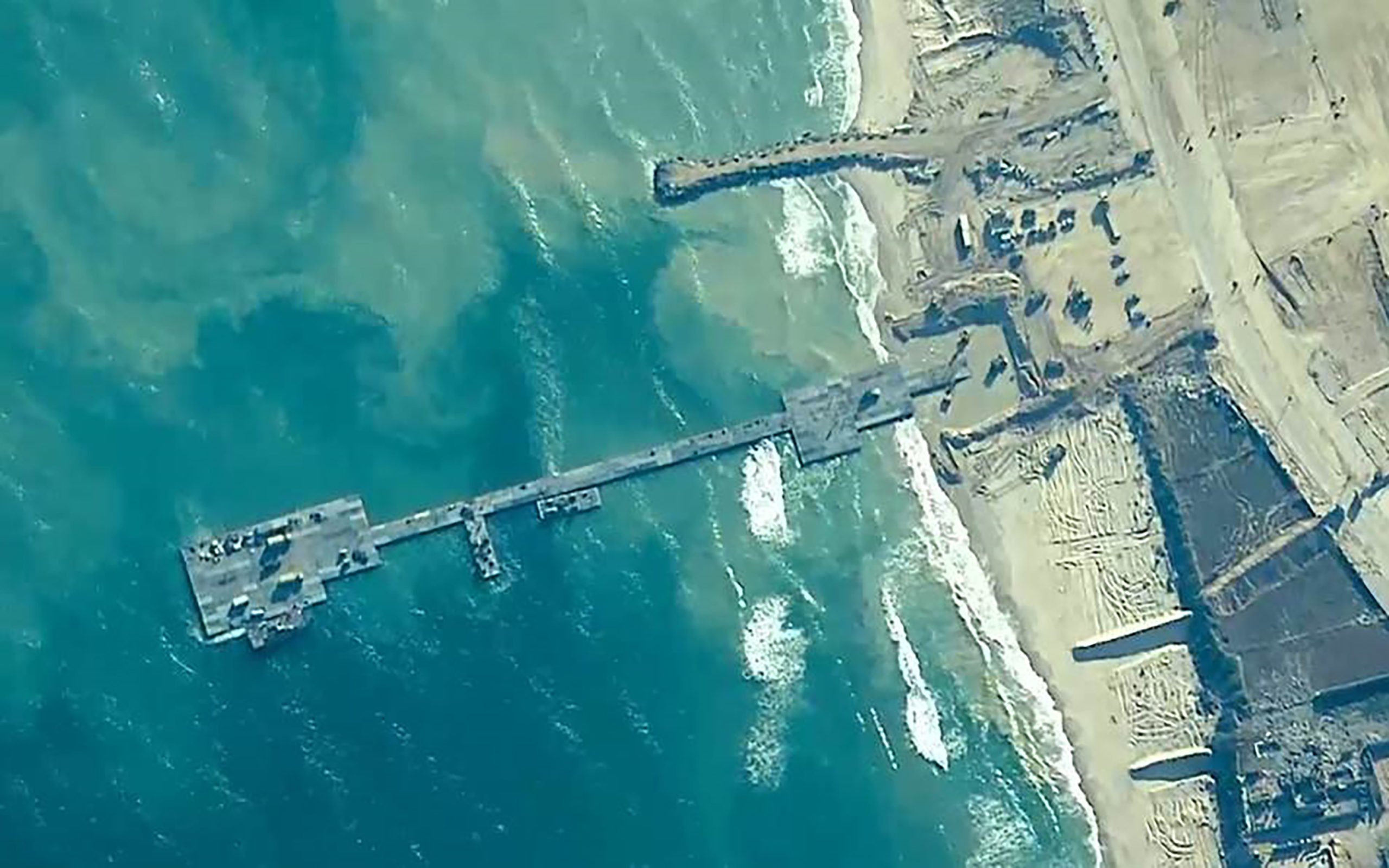The Biden administration’s Gaza aid pier will cost $22 million to repair after it was damaged by bad weather last week, two Pentagon officials told The Washington Post on Thursday.
The causeway pier, meant to serve as a channel for aid delivery to Gaza via the Mediterranean Sea, was broken apart by tumultuous weather and sea conditions in late May. It will cost at least $22 million to repair the pier before it can become operational again, but the costs could balloon to as high as $28 million, the officials told the Post, speaking on the condition of anonymity due to the sensitivity of the matter. (RELATED: Top Pentagon Official Who Came Under Fire During Lloyd Austin Hospitalization Fiasco Steps Down)
The pier is currently being rebuilt at the port of Ashdod in Israel, and officials hope to re-anchor it to the shores of Gaza by the end of the week so that the flow of aid via the Mediterranean maritime route could continue, Pentagon spokeswoman Sabrina Singh told reporters on Wednesday. The repair costs will come out of the hundreds of millions of dollars the Biden administration is dedicating to the pier.

A US soldier stands on a US military vessel that ran aground at a beach in the Israeli coastal city of Ashdod on May 25, 2024. The US military said four of its vessels, supporting a temporary pier built to deliver aid to Gaza by sea, had run aground in heavy seas. (Photo by Oren Ziv / AFP) (Photo by OREN ZIV/AFP via Getty Images)
The Pentagon initially set budget expectations for the pier at approximately $320 million, but now believes the total cost will be closer to $230 million, Singh told reporters.
“This estimate does include some of the costs associated with the repairs and rebuilding of the pier,” Singh said. “And just as a reminder, these are estimates and initial assessments, and the cost could fluctuate depending on the length of the mission and future costs, an example of that being additional repairs.”
The pier — part of the Joint Logistics Over-the-Shore (JLOTS) system that includes a separate floating pier off the coast of Gaza — can only be operated in favorable sea conditions, with waves not exceeding more than a few feet and wind speeds not higher than 15 miles per hour. Reconstruction efforts similarly cannot be conducted during poor conditions, adding the risk of further delays.
The pier and JLOTS system was already facing several setbacks prior to breaking apart in May. A day before being rendered non-functional, a separate stint of bad weather unmoored four U.S. Army JLOTS support vessels and sent them drifting away; two ended up on the shores of Gaza, and the other two in Ashdod.

UNSPECIFIED – MAY 16: (EDITOR’S NOTE: This Handout image was provided by a third-party organization and may not adhere to Getty Images’ editorial policy.) U.S. Army Soldiers assigned to the 7th Transportation Brigade (Expeditionary), U.S. Navy Sailors assigned to Amphibious Construction Battalion 1, and Israel Defense Forces emplace the Trident Pier, May 16, 2024 on the Gaza coast. The temporary pier, part of the Joint Logistics Over-the-Shore capability, will enable the maritime delivery of international humanitarian aid to the United Nations in Gaza for distribution to Palestinian people in need. (Photo by U.S. Central Command via Getty Images)
All ships have been recovered, but a video from the incident appeared to depict U.S. troops stranded on the beaches of Gaza while awaiting rescue, despite the Biden administration’s promise that there would be no boots on the ground in the region. The Pentagon has previously admitted that there is a risk that Hamas fighters in Gaza may try to engage U.S. forces working on the JLOTS system.
Days before that, three U.S. troops were injured in a non-combat incident during JLTS operations. The exact cause of the injuries is not known, but one U.S. servicemember was injured so seriously that he was evacuated to an Israeli hospital for emergency care. Singh told reporters on Wednesday that the servicemember was flown to an Army medical center in Texas on Tuesday, but “remains in critical condition.”
Over 1,000 metric tons of aid were delivered to Gaza in the week that the pier was operational, Singh told reporters on Wednesday; the Pentagon is aiming to deliver 150 truckloads of aid to Gaza per day once the pier is operational again. A United Nations official previously told the Daily Caller News Foundation that 300 to 500 trucks of aid total are needed to address the humanitarian needs of the Palestinians.
Defense experts and former U.S. officials previously told the DCNF that the pier was a “horrible” idea and that there were far better ways to get aid to Gaza.
“It was never a sound plan to begin with… whether it’s accidents, or logistical hurdles, or risk to our troops and all these problems that have come to fruition. I don’t think that there should be any effort to try to continue this, or salvage it, or fix it,” Michael DiMino, senior fellow at Defense Priorities and former CIA official told the DCNF. “I think now is an opportunity to say this failed. Let’s wrap this up before we continue to tempt fate.”
The Department of Defense did not immediately respond to a request for comment.
All content created by the Daily Caller News Foundation, an independent and nonpartisan newswire service, is available without charge to any legitimate news publisher that can provide a large audience. All republished articles must include our logo, our reporter’s byline and their DCNF affiliation. For any questions about our guidelines or partnering with us, please contact licensing@dailycallernewsfoundation.org.



